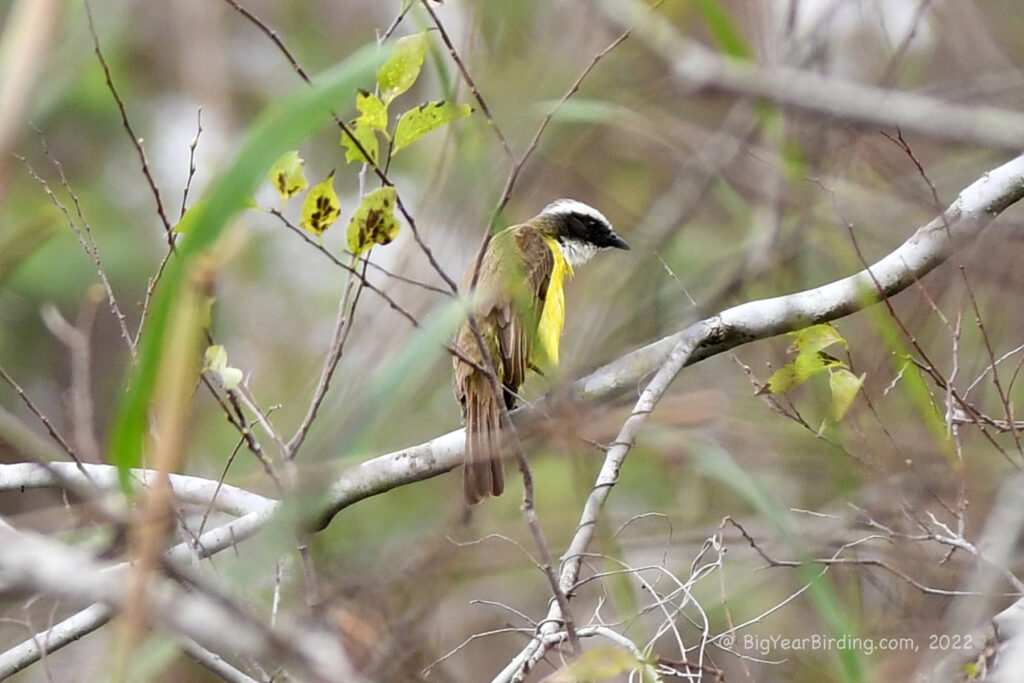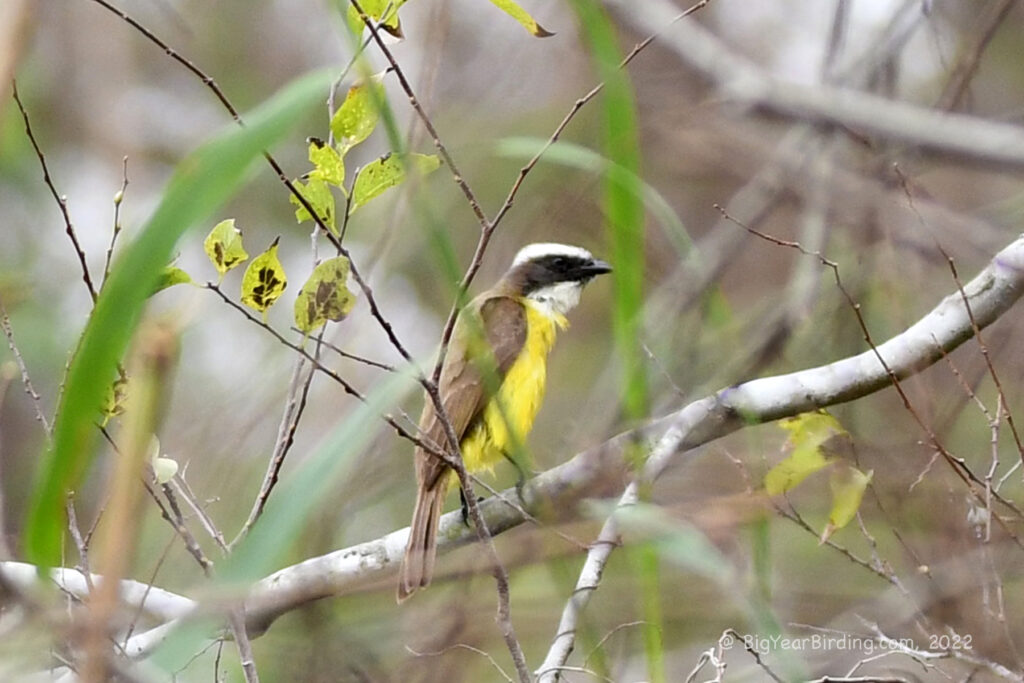
The Social Flycatcher (Myiozetetes similis) is a small passerine bird belonging to the tyrant flycatcher family. Adults measure approximately 6.5 inches (16.5 cm) in length and weigh around 0.5 oz (14 g). They have a distinctive yellow throat and breast, contrasting with grayish-brown upperparts. They also have a bold white wing patch and a relatively long tail. Juveniles have a duller plumage and lack the yellow throat and breast.
The Social Flycatcher is a common resident of open woodlands, gardens, and forest edges in Central and South America. It can be found from southern Mexico to northern Argentina, with some populations remaining resident while others migrate. Populations in the northern part of their range may move southwards in the winter, while some birds in the southern part of their range may move northwards during the breeding season.

One of the Social Flycatcher’s distinguishing behaviors is its tendency to perch conspicuously on exposed branches or wires, repeatedly flicking its tail and wings while scanning for prey. Its diet mainly consists of insects such as flies, bees, and wasps, which it catches on the wing or picks from foliage. It may also take small fruits and seeds.
The Social Flycatcher is a gregarious bird that usually nests in small colonies, often alongside other bird species. It builds a cup-shaped nest made of twigs and grass, lined with softer materials such as feathers or plant fibers. The female lays 2-3 eggs, which are incubated by both parents for about two weeks. The young fledge after about two more weeks and are fed by their parents for several more weeks.
Overall, the Social Flycatcher is a charismatic bird that can be easily identified by its yellow throat and breast, white wing patch, and flicking tail and wings. Its behavior, diet, and nesting habits make it an interesting species to observe in the wild.
